
Le Creuset Quietly Put These âGorgeousâ Dishes, Mugs, Bowls, and More on Sale (Starting at $5!)

And the colors are iconic.
READ MORE…
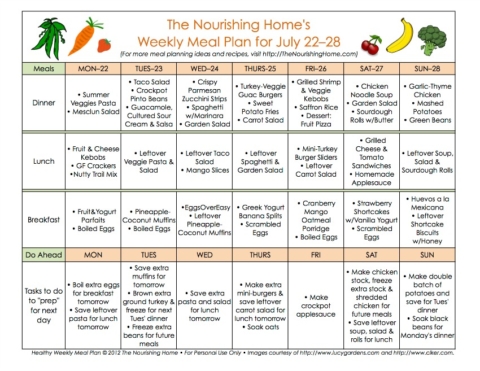
Weekly Meal Schedule for September 22, 2025
### About the Author: Holly Nilsson
Holly Nilsson serves as the imaginative mind behind Spend With Pennies, a site committed to providing simple and comforting recipes tailored for everyday cooking. Fueled by a strong love for nostalgic tastes and straightforward cooking methods, Holly empowers busy home chefs to whip up delightful meals that are both enjoyable and feasible.
Her culinary adventures are showcased in her book, “Everyday Comfort,” which seeks to motivate readers to craft hearty, homemade dishes that bring a sense of warmth and familiarity. Holly’s cooking philosophy highlights practicality and accessibility, enabling everyone to savor the joys of home-cooked meals.
For those keen on delving deeper into Holly’s culinary works, additional articles and recipes can be found on her website.
#### Follow Holly on Social Media:
– [Pinterest](https://www.pinterest.com/spendpennies/)
– [Facebook](https://www.facebook.com/ispendwithpennies/)
– [Twitter](http://spendpennies)
– [Instagram](https://www.instagram.com/spendpennies/)
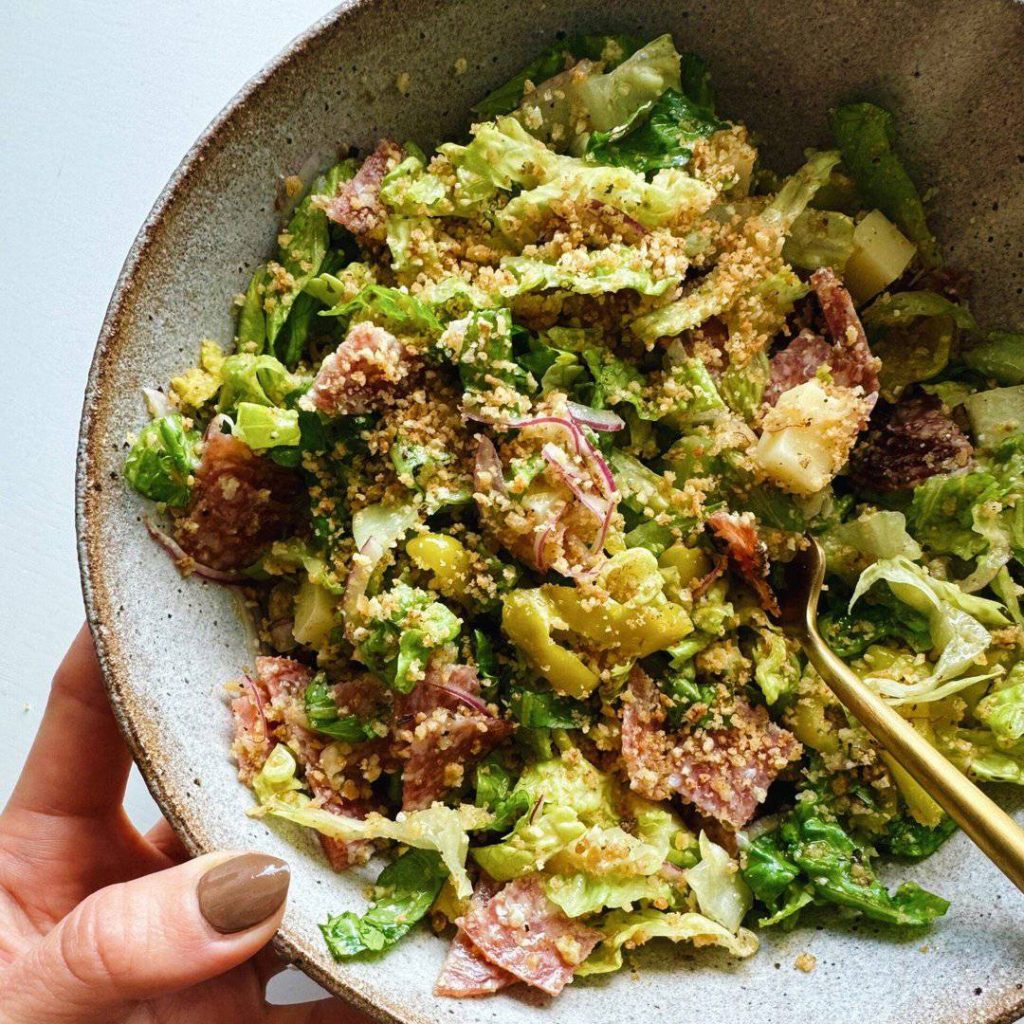
An All-Inclusive Manual to the 60 Finest Salad Recipes
These tasty salad creations highlight fresh components and bold tastes that are sure to become staples at your dining table, ranging from refreshing green salads to filling grain and bean salads.
Salads are among the most delightful methods to enjoy seasonal, nutrient-rich ingredients! The key? It’s all about layering flavors and textures.
After experimenting with salad recipes throughout the last ten years, I’ve discovered that an excellent salad adheres to several essential guidelines. They require varied textures, such as crisp veggies paired with crunchy nuts, and a flavor balance, ranging from zesty citrus to savory cheese. Here are my top salad suggestions that I’m sure you will adore! They are organized by type:
Green salad recipes
Green salads serve as the cornerstone of my salad collection. These recipes commence with fresh lettuces, kale, or mixed greens, then enhance complexity with toppings.
1. Chopped Salad: This chopped salad has become renowned in my home. The magic occurs with zesty pepperoncini and my homemade Italian dressing that’s vibrant and perfectly balanced, combined with crisp romaine and crunchy vegetables. [Get Recipe](https://www.acouplecooks.com/chopped-salad/)
2. Kale Salad: I’ve presented this massaged kale salad to countless individuals who claimed they “didn’t enjoy kale” and converted every last one. The secret lies in the preparation: I massage the kale leaves with lemon juice and olive oil until they become tender, then incorporate freshly grated Parmesan and a dash of red pepper flakes. [Get Recipe](https://www.acouplecooks.com/kale-salad-recipe/)
3. Caesar Salad: My Caesar salad features a homemade Caesar dressing that’s creamy and garlicky while avoiding heaviness. The mix of crisp romaine, creamy dressing, crunchy croutons, and sharp Parmesan results in the ideal bite each time. [Get Recipe](https://www.acouplecooks.com/caesar-salad/)
4. Easy Arugula Salad: My arugula salad might be the simplest recipe you’ll prepare! There’s no need to make a dressing. Just dress baby arugula with olive oil and lemon juice, then add Parmesan shavings and thinly sliced shallots. Pair it with roasted beets for Arugula Beet Salad. [Get Recipe](https://www.acouplecooks.com/easy-arugula-salad/)
5. Apple Salad: In my family’s preferred apple salad, crisp tart apple slices mingle with pomegranate seeds, creamy goat cheese, and crunchy, cinnamon-spiced pecans. Mix them all together over fresh greens with a zesty maple and apple cider vinegar dressing. Another choice is Apple Walnut Salad. [Get Recipe](https://www.acouplecooks.com/apple-salad/)
6. Mediterranean Salad: This salad showcases crunchy vegetables such as cucumber and onion, salty bursts of feta cheese and Kalamata olives, and handfuls of fresh herbs. Finish it with our Greek Salad Dressing. You can also add chicken, salmon, shrimp, or tofu to turn it into a meal. [Get Recipe](https://www.acouplecooks.com/mediterranean-salad/)
7. Wedge Salad: Classic is classic for a reason, and my favorite traditional wedge salad always satisfies! The crunch of iceberg lettuce paired with the creamy, savory blue cheese dressing is simply perfect. [Get Recipe](https://www.acouplecooks.com/wedge-salad/)
8. Romaine Lettuce Salad: This romaine salad dressed with pale green dressing and delicate pink radishes tastes as delightful as it appears. The Green Goddess dressing elevates it, enveloping everything in herby, savory creaminess. Top with crunchy breadcrumbs for a fun twist on croutons. [Continue Reading](https://www.acouplecooks.com/romaine-lettuce-salad/)
9. Butter Lettuce Salad: I enjoy a good butter lettuce salad, and this one is a favorite. The tender lettuce leaves are irresistible when coated in creamy, savory Parmesan Peppercorn dressing and garnished with a few simple veggies and Parmesan shavings. [Get Recipe](https://www.acouplecooks.com/butter-lettuce-salad/)
10. Italian Salad: This Italian salad bursts with all the right flavors and textures: crisp lettuce, crunchy garlic croutons, and zesty pepperoncini. It’s drizzled with a bold, herby Italian vinaigrette that makes the flavors dance! It pairs wonderfully with just about anything. [Get Recipe](https://www.acouplecooks.com/italian-salad/)
11. Easy Mexican Salad: [Get Recipe](https://www.acouplecooks.com/easy-mexican-salad/)
12. Endive Salad: Try this endive salad: an equal mix of refreshing, tangy, bitter, crunchy, and tangy! Bitter endive pairs beautifully with juicy orange and a sweet-tart red wine vinaigrette. Top it off with savory
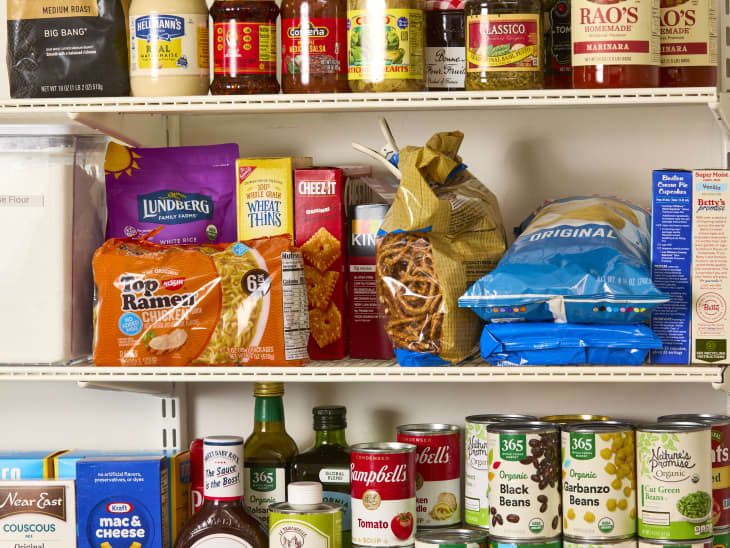
The $18 Cleaning Gem That Will Get Rid of the Moths in Your Pantry (Itâs a Bestseller!)

Shoppers bought more than 9,000 in the past month alone.
READ MORE…

How to Make Chicken Parmesan from Scratch in Under One Hour
### About the Author: Holly Nilsson
Holly Nilsson is the visionary behind Spend With Pennies, a website committed to delivering simple and comforting recipes tailored for everyday cooking. With a profound love for nostalgic tastes and uncomplicated cooking methods, Holly enables busy home chefs to create tasty meals that are both fulfilling and dependable.
Her culinary adventure is captured in her book, “Everyday Comfort,” which seeks to motivate readers with wholesome, home-cooked dishes that bring a sense of warmth and familiarity. Holly’s cooking philosophy prioritizes accessibility, allowing anyone to whip up delightful meals without the anxiety often linked to cooking.
For those interested in delving deeper into Holly’s culinary creations and perspectives, you can discover her articles on her website.
#### Follow Holly on Social Media:
– [Pinterest](https://www.pinterest.com/spendpennies/)
– [Facebook](https://www.facebook.com/ispendwithpennies/)
– [Twitter](http://spendpennies)
– [Instagram](https://www.instagram.com/spendpennies/)
Holly Nilsson keeps inspiring home cooks all around with her easy-to-follow recipes and passion for comforting cuisine.

Le Creuset Quietly Put These âGorgeousâ Dishes, Mugs, Bowls, and More on Sale (Starting at $5!)

And the colors are iconic.
READ MORE…

Weekly Meal Schedule for September 22, 2025
### About the Author: Holly Nilsson
Holly Nilsson serves as the imaginative mind behind Spend With Pennies, a site committed to providing simple and comforting recipes tailored for everyday cooking. Fueled by a strong love for nostalgic tastes and straightforward cooking methods, Holly empowers busy home chefs to whip up delightful meals that are both enjoyable and feasible.
Her culinary adventures are showcased in her book, “Everyday Comfort,” which seeks to motivate readers to craft hearty, homemade dishes that bring a sense of warmth and familiarity. Holly’s cooking philosophy highlights practicality and accessibility, enabling everyone to savor the joys of home-cooked meals.
For those keen on delving deeper into Holly’s culinary works, additional articles and recipes can be found on her website.
#### Follow Holly on Social Media:
– [Pinterest](https://www.pinterest.com/spendpennies/)
– [Facebook](https://www.facebook.com/ispendwithpennies/)
– [Twitter](http://spendpennies)
– [Instagram](https://www.instagram.com/spendpennies/)
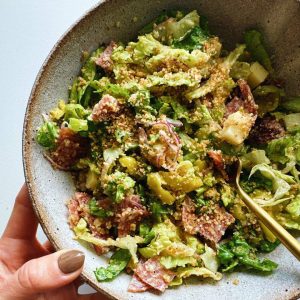
An All-Inclusive Manual to the 60 Finest Salad Recipes
These tasty salad creations highlight fresh components and bold tastes that are sure to become staples at your dining table, ranging from refreshing green salads to filling grain and bean salads.
Salads are among the most delightful methods to enjoy seasonal, nutrient-rich ingredients! The key? It’s all about layering flavors and textures.
After experimenting with salad recipes throughout the last ten years, I’ve discovered that an excellent salad adheres to several essential guidelines. They require varied textures, such as crisp veggies paired with crunchy nuts, and a flavor balance, ranging from zesty citrus to savory cheese. Here are my top salad suggestions that I’m sure you will adore! They are organized by type:
Green salad recipes
Green salads serve as the cornerstone of my salad collection. These recipes commence with fresh lettuces, kale, or mixed greens, then enhance complexity with toppings.
1. Chopped Salad: This chopped salad has become renowned in my home. The magic occurs with zesty pepperoncini and my homemade Italian dressing that’s vibrant and perfectly balanced, combined with crisp romaine and crunchy vegetables. [Get Recipe](https://www.acouplecooks.com/chopped-salad/)
2. Kale Salad: I’ve presented this massaged kale salad to countless individuals who claimed they “didn’t enjoy kale” and converted every last one. The secret lies in the preparation: I massage the kale leaves with lemon juice and olive oil until they become tender, then incorporate freshly grated Parmesan and a dash of red pepper flakes. [Get Recipe](https://www.acouplecooks.com/kale-salad-recipe/)
3. Caesar Salad: My Caesar salad features a homemade Caesar dressing that’s creamy and garlicky while avoiding heaviness. The mix of crisp romaine, creamy dressing, crunchy croutons, and sharp Parmesan results in the ideal bite each time. [Get Recipe](https://www.acouplecooks.com/caesar-salad/)
4. Easy Arugula Salad: My arugula salad might be the simplest recipe you’ll prepare! There’s no need to make a dressing. Just dress baby arugula with olive oil and lemon juice, then add Parmesan shavings and thinly sliced shallots. Pair it with roasted beets for Arugula Beet Salad. [Get Recipe](https://www.acouplecooks.com/easy-arugula-salad/)
5. Apple Salad: In my family’s preferred apple salad, crisp tart apple slices mingle with pomegranate seeds, creamy goat cheese, and crunchy, cinnamon-spiced pecans. Mix them all together over fresh greens with a zesty maple and apple cider vinegar dressing. Another choice is Apple Walnut Salad. [Get Recipe](https://www.acouplecooks.com/apple-salad/)
6. Mediterranean Salad: This salad showcases crunchy vegetables such as cucumber and onion, salty bursts of feta cheese and Kalamata olives, and handfuls of fresh herbs. Finish it with our Greek Salad Dressing. You can also add chicken, salmon, shrimp, or tofu to turn it into a meal. [Get Recipe](https://www.acouplecooks.com/mediterranean-salad/)
7. Wedge Salad: Classic is classic for a reason, and my favorite traditional wedge salad always satisfies! The crunch of iceberg lettuce paired with the creamy, savory blue cheese dressing is simply perfect. [Get Recipe](https://www.acouplecooks.com/wedge-salad/)
8. Romaine Lettuce Salad: This romaine salad dressed with pale green dressing and delicate pink radishes tastes as delightful as it appears. The Green Goddess dressing elevates it, enveloping everything in herby, savory creaminess. Top with crunchy breadcrumbs for a fun twist on croutons. [Continue Reading](https://www.acouplecooks.com/romaine-lettuce-salad/)
9. Butter Lettuce Salad: I enjoy a good butter lettuce salad, and this one is a favorite. The tender lettuce leaves are irresistible when coated in creamy, savory Parmesan Peppercorn dressing and garnished with a few simple veggies and Parmesan shavings. [Get Recipe](https://www.acouplecooks.com/butter-lettuce-salad/)
10. Italian Salad: This Italian salad bursts with all the right flavors and textures: crisp lettuce, crunchy garlic croutons, and zesty pepperoncini. It’s drizzled with a bold, herby Italian vinaigrette that makes the flavors dance! It pairs wonderfully with just about anything. [Get Recipe](https://www.acouplecooks.com/italian-salad/)
11. Easy Mexican Salad: [Get Recipe](https://www.acouplecooks.com/easy-mexican-salad/)
12. Endive Salad: Try this endive salad: an equal mix of refreshing, tangy, bitter, crunchy, and tangy! Bitter endive pairs beautifully with juicy orange and a sweet-tart red wine vinaigrette. Top it off with savory
Read More
The $18 Cleaning Gem That Will Get Rid of the Moths in Your Pantry (Itâs a Bestseller!)

Shoppers bought more than 9,000 in the past month alone.
READ MORE…

How to Make Chicken Parmesan from Scratch in Under One Hour
### About the Author: Holly Nilsson
Holly Nilsson is the visionary behind Spend With Pennies, a website committed to delivering simple and comforting recipes tailored for everyday cooking. With a profound love for nostalgic tastes and uncomplicated cooking methods, Holly enables busy home chefs to create tasty meals that are both fulfilling and dependable.
Her culinary adventure is captured in her book, “Everyday Comfort,” which seeks to motivate readers with wholesome, home-cooked dishes that bring a sense of warmth and familiarity. Holly’s cooking philosophy prioritizes accessibility, allowing anyone to whip up delightful meals without the anxiety often linked to cooking.
For those interested in delving deeper into Holly’s culinary creations and perspectives, you can discover her articles on her website.
#### Follow Holly on Social Media:
– [Pinterest](https://www.pinterest.com/spendpennies/)
– [Facebook](https://www.facebook.com/ispendwithpennies/)
– [Twitter](http://spendpennies)
– [Instagram](https://www.instagram.com/spendpennies/)
Holly Nilsson keeps inspiring home cooks all around with her easy-to-follow recipes and passion for comforting cuisine.
Read More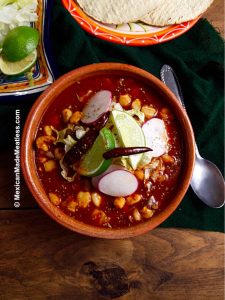
Fast and Simple Instant Pot Pozole Rojo Recipe
# Simple and Quick Instant Pot Pozole Rojo Recipe
Pozole Rojo is a classic Mexican soup, abundant in flavor and tradition. Typically prepared with pork, hominy, and a mix of spices and chilies, this dish culminates in a rich red broth. Utilizing an Instant Pot can greatly lessen the cooking duration while preserving the genuine taste. Here’s a straightforward and quick recipe to savor this traditional dish at home.
## Ingredients
– 2 lbs pork shoulder, chopped into pieces
– 1 large onion, diced
– 4 cloves garlic, chopped
– 2 tablespoons vegetable oil
– 1 tablespoon ground cumin
– 1 tablespoon dried oregano
– 2 teaspoons salt
– 1 teaspoon black pepper
– 2 bay leaves
– 4 cups chicken broth
– 2 cups water
– 1 (25 oz) can of hominy, drained and rinsed
– 3 dried guajillo chilies, stems removed and seeded
– 3 dried ancho chilies, stems removed and seeded
– 1 tablespoon apple cider vinegar
## Garnishes (optional)
– Shredded cabbage
– Sliced radishes
– Diced avocado
– Chopped cilantro
– Lime wedges
– Tortilla chips
## Instructions
### Step 1: Prepare the Chilies
1. Place the guajillo and ancho chilies in a bowl, covering them with hot water. Allow them to soak for approximately 15 minutes until softened.
2. Drain the chilies and put them in a blender. Add 1 cup of chicken broth and blend until smooth. Set aside.
### Step 2: Sauté the Ingredients
1. Switch the Instant Pot to the ‘Sauté’ mode and add vegetable oil.
2. Add the diced onion and chopped garlic, sautéing until the onion turns translucent.
3. Incorporate the pork pieces into the pot, browning them on all sides.
### Step 3: Add Seasonings and Broth
1. Mix in the cumin, oregano, salt, and black pepper.
2. Pour the blended chili mixture, along with the remaining chicken broth and water.
3. Include the bay leaves and apple cider vinegar. Stir thoroughly to combine.
### Step 4: Pressure Cook
1. Close the lid on the Instant Pot and select ‘Manual’ or ‘Pressure Cook’ on high for 30 minutes.
2. After the cooking time finishes, allow the pressure to release naturally for about 10 minutes, then conduct a quick release for any remaining pressure.
### Step 5: Add Hominy
1. Carefully take off the lid and mix in the drained hominy into the pot.
2. Return the Instant Pot to ‘Sauté’ mode and let the pozole simmer for another 5-10 minutes to warm the hominy completely.
### Step 6: Serve
1. Remove the bay leaves prior to serving.
2. Serve the pozole into bowls and garnish with your choice of shredded cabbage, sliced radishes, diced avocado, chopped cilantro, lime wedges, and tortilla chips.
## Tips for the Ideal Pozole Rojo
– **Chili Selection**: The guajillo and ancho chilies lend the distinctive red hue and rich flavor. Modify the quantity of chilies based on your heat tolerance.
– **Pork Alternatives**: While pork shoulder is the traditional choice, chicken thighs can be used for a lighter version.
– **Make Ahead**: Pozole often benefits from being made a day in advance as the flavors meld. Consider preparing it a day ahead and reheating it before serving.
Indulge in this robust and flavorful Instant Pot Pozole Rojo, a comforting dish suitable for any gathering.
Read More
Anthropologieâs Halloween Collection Is So âStunning,â Even Morticia Addams Would Approve

Number 3 is a need.
READ MORE…

10 Kitchen Items That âStill Work Like a Dreamâ After Using Them Every Day for Decades, According to Home Cooks

Some even come from their great-great-grandmothers.
READ MORE…

Eggs Florentine: A Timeless Recipe Featuring Poached Eggs atop Spinach and English Muffins
### Brunch at Home: The Delight of Crafting Eggs Florentine
Brunch is a cherished weekend custom for many, providing a delightful chance to savor delectable food and enjoy leisurely moments with family and friends. Although dining out can be enjoyable, there’s something unique about crafting a brunch experience within the comforts of home. This article delves into the pleasures of creating brunch at home, with a particular emphasis on the traditional dish, Eggs Florentine.
#### The Charm of Brunch at Home
Opting for brunch at home often means evading the lengthy waits for a table and the letdown of poorly prepared dishes. Many home chefs appreciate the coziness of their kitchens, where they can influence the quality and taste of their meals. For those who value the art of cooking, brunch at home can be a gratifying avenue for expressing creativity and tailoring to personal preferences.
#### Eggs Florentine: A Timeless Dish
Among the numerous brunch selections, Eggs Florentine shines as a scrumptious option. This dish consists of poached eggs placed atop a toasted English muffin, adorned with a rich and creamy hollandaise sauce. In contrast to its more renowned sibling, Eggs Benedict, which incorporates Canadian bacon, Eggs Florentine opts for sautéed spinach, rendering it a lighter yet equally gratifying choice.
The blend of perfectly poached eggs, vibrant spinach, and buttery hollandaise delivers a harmonious mix of flavors and textures. The hollandaise sauce, with its smooth consistency, enhances the dish, making it a favorite among brunch aficionados.
#### Preparing Eggs Florentine at Home
Though preparing Eggs Florentine may appear intimidating due to the requirement for poaching eggs and making hollandaise sauce, the procedure can be straightforward with the right technique. Below is a comprehensive recipe to help you create this delightful dish at home.
##### Ingredients
**For the Hollandaise Sauce:**
– 2 large egg yolks
– 1/2 cup unsalted butter, melted yet warm
– 1/2 teaspoon kosher salt (plus more to taste)
– 1/2 to 1 tablespoon lemon juice (to taste)
– A dash or two of hot sauce (to taste)
**For the Spinach:**
– 10 ounces baby spinach
– 1 tablespoon unsalted butter
– 3 tablespoons minced shallot
– Salt and freshly ground black pepper
**For Assembly:**
– 6 large eggs
– A splash of white vinegar
– 3 English muffins, split into halves
– Extra butter for toasting
##### Directions
1. **Prepare the Hollandaise Sauce:**
– Utilizing an upright or immersion blender, blend the egg yolks until well mixed. Gradually drizzle in the melted butter while blending until the sauce thickens. Season with salt, lemon juice, and hot sauce to taste. Set aside.
2. **Cook the Spinach:**
– In a skillet, add a small amount of water and bring it to a simmer. Add the spinach and cook until wilted. Drain and press out excess water. In the same skillet, melt butter, add shallots, and cook until golden. Return spinach to the skillet, season with salt and pepper, and mix thoroughly.
3. **Poach the Eggs:**
– Fill a saucepan with water and add vinegar. Bring to a gentle simmer. Crack each egg into a small dish and gently slide it into the water, creating a whirlpool. Cook for 3 to 5 minutes until the whites are set. Remove with a slotted spoon.
4. **Toast the English Muffins:**
– In the skillet, melt butter and toast the English muffin halves until golden brown.
5. **Assemble the Dish:**
– Place the toasted muffin halves on a plate, top with spinach, add a poached egg, and drizzle with hollandaise sauce. Season to taste and serve promptly.
#### Conclusion
Crafting Eggs Florentine at home is a fulfilling culinary journey that can uplift your brunch occasion. With a bit of practice, you can perfect the technique of poaching eggs and creating a sumptuous hollandaise sauce, bringing the essence of a restaurant brunch into your kitchen. Savor the pleasure of presenting a beautiful dish that delights both the eyes and the taste buds, and enjoy the joy of brunching at home.
Read More
